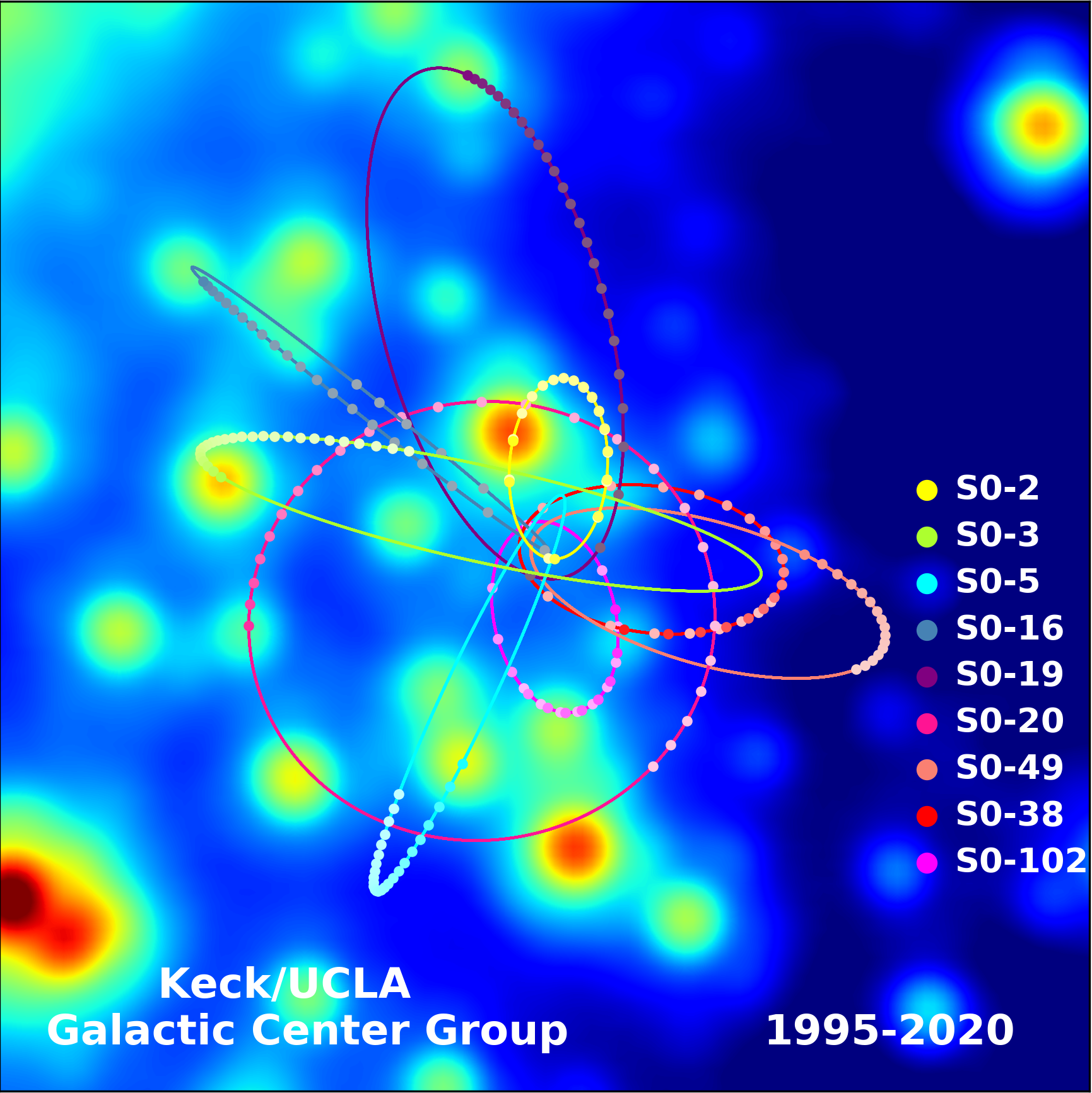Our planet is in the Milky Way’s suburbs—think of a quaint town in New Jersey, with the heart of Manhattan as the galactic center. However, instead of Central Park, the main attraction of the Milky Way is a supermassive black hole known as Sagittarius A*. This black hole is so large that it weighs a few million times our sun’s mass. In that galactic center, stars are packed much closer together than in the sun’s neighborhood, similar to rush hour commuters in the Big Apple, flinging about in their speedy orbits around the black hole.
These stars are packed so tightly that they sometimes collide—an event that simply doesn’t happen in our more spacious part of the galaxy. New research presented this month at the American Physical Society’s annual meeting and submitted to The Astrophysical Journal uses computer simulations to show that these collisions are actually key to explaining some of the more mysterious phenomena of the galactic center.
Since the Nobel-prize-winning discovery of our galaxy’s black hole in 2020, astronomers have been studying the center of our galaxy as a way to understand galaxies across the universe.
“The centers of other galaxies are too far away for us to observe in detail, but we can learn about these environments by studying the center of the Milky Way,” explains Sanaea Rose, lead author and astronomer at Northwestern University’s Center for Interdisciplinary Exploration and Research in Astrophysics.
So far, astronomers have often been surprised by what they find at the center of the galaxy. For example, there is a population of particularly young, bright stars there that shouldn’t exist. The forces from the black hole are simply too strong for new stars to be born in that environment. On the other hand, there should be a bunch of older red giant stars in the galactic center, but they’re mysteriously missing. Plus, there are weird, yet-unexplained “puffy balls of dust and gas” as Rose describes them, known as G objects. “What we try to do is explain these unusual findings with stellar interactions, which are common in the dense star cluster,” she adds.
 The orbits of stars within the central 1.0 X 1.0 arcseconds of our Galaxy. In the background, the central portion of a diffraction-limited image taken in 2015 is displayed. While every star in this image has been seen to move over the past 20 years, estimates of orbital parameters are best constrained for stars that have been observed through at least one turning point of their orbit. The annual average positions for these stars are plotted as colored dots, which have increasing color saturation with time. Also plotted are the best fitting simultaneous orbital solutions. (This image was created by Prof. Andrea Ghez and her research team at UCLA and are from data sets obtained with the W. M. Keck Telescopes.) Credit: UCLA Galactic Center Group – W.M. Keck Observatory Laser Team.
The orbits of stars within the central 1.0 X 1.0 arcseconds of our Galaxy. In the background, the central portion of a diffraction-limited image taken in 2015 is displayed. While every star in this image has been seen to move over the past 20 years, estimates of orbital parameters are best constrained for stars that have been observed through at least one turning point of their orbit. The annual average positions for these stars are plotted as colored dots, which have increasing color saturation with time. Also plotted are the best fitting simultaneous orbital solutions. (This image was created by Prof. Andrea Ghez and her research team at UCLA and are from data sets obtained with the W. M. Keck Telescopes.) Credit: UCLA Galactic Center Group – W.M. Keck Observatory Laser Team. “Very close to the supermassive black hole, collisions of stars are so common that they become one of the strongest forces shaping the lives of stars,” says Morgan MacLeod, a co-author of this research and astronomer at the Harvard-Smithsonian Center for Astrophysics.
These stars move at extremely high speeds: thousands of kilometers each second, compared to the leisurely 30 km/s our un trots through the galaxy. When two speeding stars run into each other head-on, they can destroy each other in the process like a car crash.
But, there are even stranger things that can happen according to Rose’s simulations. Some stars in the very closest regions—about ⅓ of a light year from Sagittarius A*—lose only their outer layers in these collisions, creating a population of strange, lower-mass stars at the galactic center and destroying most of the red giant stars astronomers expected to see. Ohio State University astronomer Alexander Stephan, who is not affiliated with the research team, noted that this work therefore explains the “crucial issue of the ‘missing giants’ in the galactic center.” These collisions might also be responsible for the mysterious G objects, their work suggests.
Outside of the closest ⅓ of a light year, the collisions aren’t quite so catastrophic. Two stars can actually merge together to make a huge star that “can masquerade as young-looking stars, even though they formed from an older population,” explains Rose. “Collisions may therefore explain the presence of young-seeming, massive stars very near the supermassive black hole.”
This bizarre part of the galaxy is certainly nothing like our Goldilocks-perfect home on Earth, but work like this brings us closer to understanding how invigorating collisions might explain some of the strange things we see in exotic environment of the galactic center.















